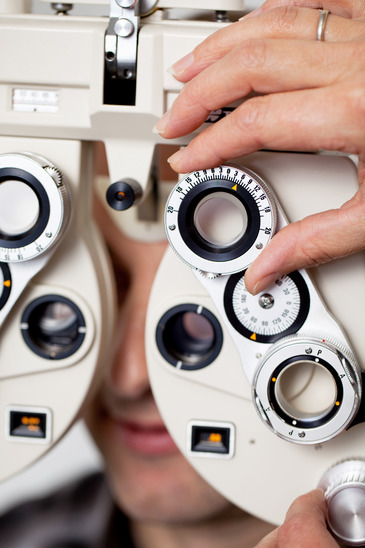
Ask a myopic person what could his poor sight have been attributed to, and they probably admit to having inadequate eye care. Prevention is always better than cure but if you are already suffering from myopia or know someone who has this condition when you are reading this article, it is indeed timely. This article aims to discuss about the possible myopia treatments available and accessible in the market.
Currently, there are four types of solutions to this sight limiting condition. These include Multifocal contact lenses, Orthokeratology, Multifocal eyeglasses and Laser treatment for myopia. We hope to share with you clear differences in the types of treatment, along with the pros and cons of each solution. Say goodbye to the inconveniences of short-sightedness!
An obvious and common corrective alternative for one suffering from myopia would be external wear, including that of glasses and contact lenses. Upon receiving prescription from the optometrist, you would be able to purchase personalized glasses and contact lenses for daily use. It is important to get the correct prescription and regular attendance to the optometrist to check for any changes in your myopia degree would be essential in the long run. Many daily activities such as driving and walking on the streets would rely heavily on your sight and you should not compromise the safety of yourself and others. Also, you should not let your myopic condition limit your adventures to go diving or engage in vigorous sports.
To cater to those who have lifestyles that demand the equivalent of perfect vision even without any visual aid, myopia surgery would be the ultimate solution for you. What we all generalized as LASIK, this surgery to the cornea would be able to grant you perfect vision. However much careful deliberation about myopia surgery side effects would be deemed compulsory. Patients need to be aware that LASIK can result in flap related complications and debris stuck under the flaps. Furthermore, the eyes are prone to long term, permanent dry eyes as thousands of cornea nerve endings are cut when the cornea flap is created. The cornea is no longer preserved for future use or correction.
Even with the modern technology that Trans epi-LASIK is offering as a safe and modern laser treatment for myopia side effects, there are repercussions if there is inadequate eye care after the surgery. The eyes are still at risk of infection, inflammation and scarring. Also, slower visual recovery translates to more precaution need to be taken to avoid strong and direct sunlight for up to a month.
Although the cons of the surgery may seem glaring at first, it is good to note that the pros will outweigh it. With Trans epi-LASIK, there will not be permanent dry eyes and no flap related complications. This procedure is an alternative to contact lenses for active sportspeople, people with dry eyes, thin cornea and/ or high myopia power, and those who want to preserve their cornea tissue for future use. Recovery is painless and you will be waking up to perfect vision.
In conclusion, there are both pros and cons to each myopia treatment and it is necessary to make informed decisions both in the short and long term. Regardless of the decision you make, good eye care habits are still at the crux of sustaining your eyes to last you a lifetime.







